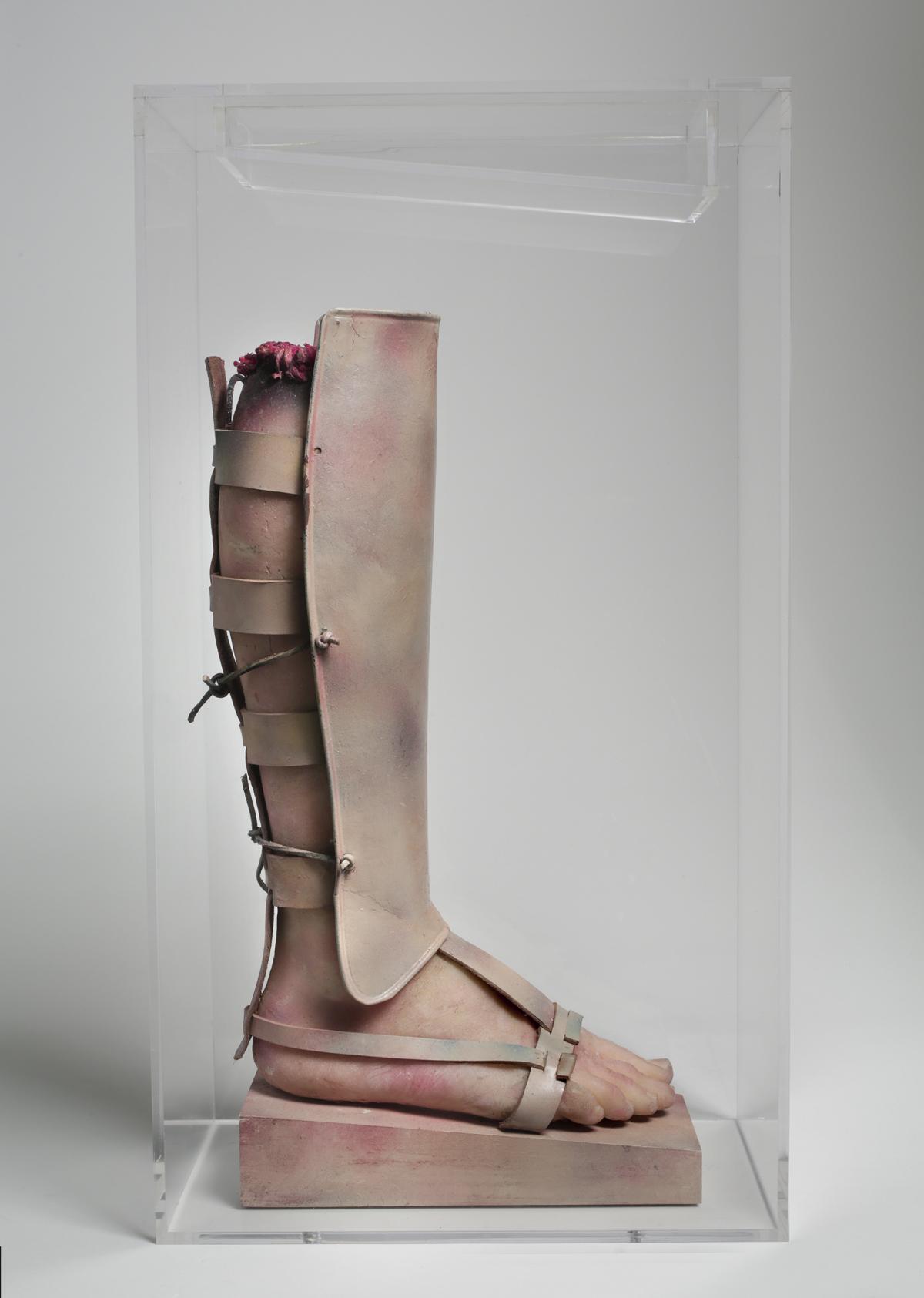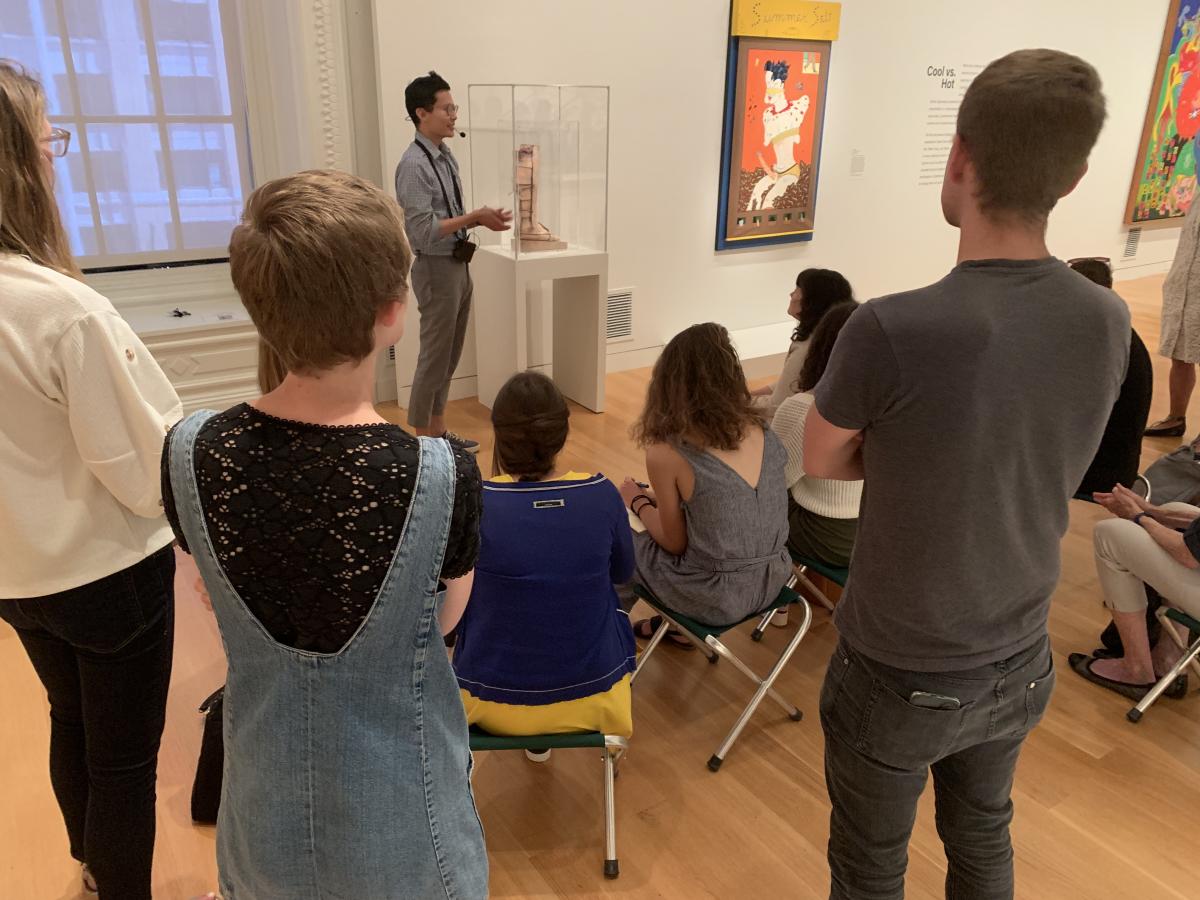Paisid Aramphongphan was a recent Terra Foundation Postdoctural Fellow at SAAM and holds a doctorate in the history of art and architecture from Harvard University. He was recently awarded the Smithsonian American Art Museum's 2019 Terra Foundation for American Art International Essay Prize for his work on the artist Paul Thek.
Rarely exhibited, Paul Thek's Warrior's Leg (1966–1967) stands in the current exhibition Artists Respond: American Art and the Vietnam War, 1965–1975. The artist, Paul Thek (1933–1988), cast a part of leg—most likely his own—painted it in realistic detail, and adorned it with a leather sandal and greave. The top part of the leg, which we can peer onto, reveals the flesh, sinews, and ligaments; the leg fragment once belonging to a warrior, as the title tells us, had been unceremoniously cut off, perhaps in battle.
The work is part of Thek's Technological Reliquaries series, informally known as the Meat Pieces, which he worked on from around 1964 to 1967. At first, Thek sculpted wax to look like slabs of meat, and displayed them in all their gory and shiny detail (for an example of an early Meat Piece, see Untitled (Meat Pyramid) from 1964, currently on view in SAAM's Luce Foundation Center). Around 1966, Thek started casting his own body parts, raising the unsettling uncanniness of his work. His ultimate goal was to cast his body as a corpse, which he did in a work that he presented as his tomb (The Tomb, 1967).
What had prompted, first of all, his morbid fascination with dead flesh and mutilated body parts? Among the formative events of his artistic imagination surely was Thek's visit in the early 1960s, with the photographer Peter Hujar, his lover at the time, to the Catacombs in Palermo, Sicily. The sight (and, as he tells it, touch) of long dead, desiccated corpses stayed with him, and brought home the realization of the "thing-ness" of his own body. With his Catholic background, Thek furthermore was taken in with the religious art he saw in Italy. The title of the series, Technological Reliquaries, refers to the relic tradition in religious material culture, while the leather strap and protective gear allude both to gladiators in Roman times and depictions of archangels such as Saint Michael in battle. The field of allusions the work makes—certainly not a set of common references his artistic peers were making in the 1960s at a time of self-referential, modernist art—speak to his hope of creating an art that would mean more to him, more than the cold coolness of the trendiest art of his time, from pop to minimalism, an art that would be closer to liturgy, to a "spiritual education," as opposed to the "technological education" pervasive in society to the detriment of, in his view, collective well-being.
In Artists Respond, the work is shown alongside works of the often overlooked "hot" and politicized side of 1960s art, many confronting the viewer with images of death and destruction, the ravages of war that were also being beamed straight into the living room during the first "televised war," as Martha Rosler's work, also included in the exhibition, demonstrates so well. Beyond a statement against the prevailing artistic trend of his time, Warrior's Leg in this context brings to mind losses and pain that, as Thek reflected on his experience walking through art galleries, co-mingling with his peers, the art world seemed helpless, if not simply disinterested, to do anything about. At the time of the work's making, the US government was becoming further involved with the war in Vietnam, with deployment of more troops in the region as the war escalated, even as the anti-war movement was gaining ground.
In religious material culture, bodily fragments are not only associated with reliquaries. Another tradition is the ex-voto, a practice with a long history in many regions in the world, including in Sicily. Casts or replicas of afflicted body parts are offered to deities or higher spirits, with offerings, with prayers, with the hope to heal, or as gratitude for past healing performed. Sights of casts of legs, arms—or even models of internal organs such as the womb—lining the walls of shrines are common. Whose leg are we looking at, torn off but standing erect still? What healing could be asked of it? Whose healing?
The exhibition Artists Respond: American Art and the Vietnam War is on view in Washington, DC through August 18. It then travels to Minnesota, opening at the Minneapolis Institute of Art September 29, 2019.
This blog post is based on the Art Bites series of lunchtime talks at the museum. They feature the voices of SAAM's research fellows who share their discoveries about artworks from the collection.






















